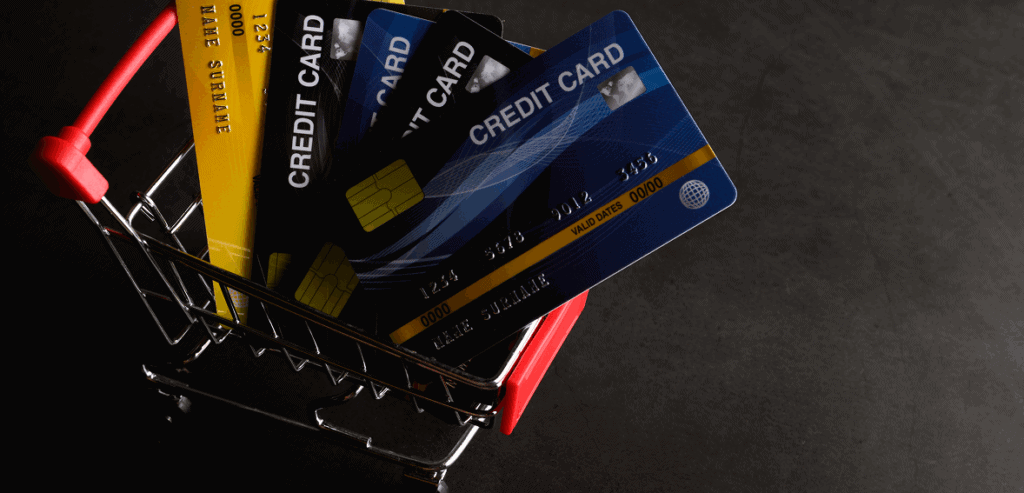
By Imogen Roberts May 14, 2025
Every time a customer pays with a credit or debit card, a portion of that transaction goes to the payment processor, card network, and issuing bank. For business owners, these fees might seem straightforward at first glance. However, one often overlooked factor that can significantly affect what you pay per transaction is the type of card used. Whether it’s a basic debit card, a premium rewards card, or a corporate credit card, each card type carries different cost implications that impact your bottom line.
Understanding how card types influence your processing fees can help you make better decisions when choosing a merchant services provider, negotiating rates, or optimizing your payment acceptance strategy.
What Happens Behind the Scenes During a Card Transaction
Before diving into the role of card type, it helps to understand what happens during a card payment. When a customer makes a purchase using a card, the transaction is routed through multiple entities. These include the acquiring bank (your processor), the card network (like Visa or Mastercard), and the issuing bank (the bank that issued the customer’s card). Each party takes a share of the transaction in the form of fees.
These fees typically fall into three categories: interchange fees, assessment fees, and processor markups. Interchange fees are paid to the issuing bank and represent the largest portion of the cost. Assessment fees go to the card network, and the processor adds its own markup. Among these, interchange fees are the most affected by the type of card used in the transaction.
Debit Cards vs. Credit Cards
One of the first distinctions that affects cost is whether a card is debit or credit. Debit cards generally have lower interchange fees than credit cards. This is because they are considered lower risk. When a debit card is used, the funds are pulled directly from the customer’s bank account, which reduces the chance of non-payment or default.
Credit cards, on the other hand, involve a line of credit extended by the issuing bank. This adds a layer of risk, which is reflected in higher interchange fees. For a business, this means that a customer using a debit card may cost significantly less to process than one using a credit card for the same purchase amount.
The difference may seem small on a single transaction, but across hundreds or thousands of payments, it can translate to a meaningful difference in overall processing costs. Encouraging customers to use debit cards where appropriate may help reduce your average cost per transaction.
Basic Credit Cards vs. Premium Rewards Cards

Not all credit cards are priced equally when it comes to interchange fees. Basic consumer credit cards have standard fees that are relatively manageable. However, when a customer pays with a rewards card—especially one offering cashback, travel points, or other perks—the cost of the transaction increases for the merchant.
These premium cards cost more to process because the issuing bank uses part of the interchange fee to fund the customer’s rewards. In other words, the merchant is subsidizing the loyalty benefits enjoyed by the cardholder. This can result in an interchange fee that is several tenths of a percent higher than that of a basic card.
For example, a regular Visa card might carry an interchange rate of around one point five percent, while a premium rewards card could come in at two point one percent or higher. While customers love these cards for their perks, merchants often pay the price in the form of higher transaction costs.
Business and Corporate Cards
Corporate or purchasing cards, often issued to employees for business expenses, have some of the highest interchange fees in the industry. These cards are typically used for larger transactions and come with reporting features or centralized billing, which make them useful for organizations but more expensive for merchants.
Because corporate cards are associated with additional features and higher credit limits, the issuing banks charge more to cover their costs and perceived risk. If your business frequently sells to corporate clients or accepts high-value transactions through these types of cards, your processing costs will reflect that.
To manage this, it is important to monitor which cards are most commonly used in your business and consider this data when negotiating rates with your processor or when evaluating pricing models. Some processors offer better terms for businesses that process a high volume of commercial cards, but only if this is discussed upfront.
Government-Issued and Regulated Cards
Certain debit cards are regulated by government standards and come with capped interchange fees. For example, in the United States, the Durbin Amendment limits the interchange fees on debit cards issued by large banks. This means those cards cost less to process, which benefits merchants.
However, not all debit cards fall under this regulation. Cards issued by smaller banks or credit unions may carry higher fees. Understanding which debit cards are subject to regulation can help you better assess your average transaction costs. Most processors can provide data that breaks down card usage and associated fees so you can see which types of cards are driving up your expenses.
How Card Entry Method Impacts Cost
Card type is not the only variable—how the card is entered also influences transaction costs. Swiped or chip-inserted cards in a card-present environment are generally less expensive to process than keyed-in or online transactions.
This is because card-present transactions are seen as more secure, with lower fraud risk. When a customer physically presents the card, the system captures more data points, such as the chip code or magnetic stripe. In contrast, when a card number is manually entered, the processor assumes a higher risk of fraud and charges accordingly.
Online transactions, which include ecommerce and digital wallets, also tend to carry higher interchange fees due to the added security requirements and fraud prevention measures needed in card-not-present environments.
If your business takes payments in multiple ways, tracking how often each method is used and understanding how it intersects with card type can provide valuable insights into where your transaction costs are coming from.
Why Most Businesses Can’t Control Card Type
While card type heavily influences transaction costs, most businesses cannot control which cards their customers use. Telling a customer not to use their premium rewards card is not only bad etiquette but also bad for business. Customers expect to use their preferred payment method without restriction.
That said, there are strategies businesses can use to manage the impact of high-cost cards. Some merchants offer small discounts for debit card or cash payments. Others set minimum purchase amounts for credit card use, within legal limits. These approaches can gently guide customer behavior without alienating them.
The more practical solution is to use your card type data to negotiate with your processor. If your business has a unique card profile—such as mostly regulated debit or a high percentage of swiped consumer cards—share that information. A processor that understands your card mix may be able to adjust your pricing model to reflect your actual risk and cost structure more accurately.
The Role of Interchange-Plus Pricing
One of the most transparent ways to manage card-type-related costs is through interchange-plus pricing. Unlike flat-rate or tiered pricing models, interchange-plus breaks down each transaction into the actual interchange fee set by the card networks and the markup charged by the processor.
This level of transparency allows you to see exactly how each card type affects your costs. You can identify which transactions are costing more and why. Over time, this information can be used to optimize your payment strategy, select the right processor, and negotiate better terms based on actual card usage.
Interchange-plus also ensures you are not overpaying on low-cost transactions. In flat-rate models, a high markup is often applied across the board to average out the cost of high-risk cards. If your card profile includes a high number of regulated debit or standard consumer credit cards, you may be subsidizing the cost of others.
How Processors Use Card Type Data

Processors collect and analyze data on every transaction, including the type of card used. They use this data to assess the risk profile of your business, calculate your effective rate, and determine whether you qualify for custom pricing.
If you are unaware of your card usage trends, your processor has the upper hand in pricing discussions. But if you know the breakdown of debit versus credit, standard versus rewards, and in-person versus online, you can advocate for pricing that reflects your actual usage rather than a generic rate.
Ask your processor for a card-type summary report. This will show you the percentage of each card type used and the associated costs. Once you have this information, you can start a more informed conversation about your pricing structure.
Planning Ahead with the Right Knowledge
As payment technology evolves, so does card complexity. New forms of payment, such as mobile wallets, contactless payments, and cryptocurrency-backed cards, are entering the market with their own cost implications. The more informed you are about how card type influences fees, the more prepared you will be to adapt your strategy.
Being aware of your card profile also helps with forecasting. If you anticipate an increase in online sales or corporate customers, you can plan for the higher transaction costs that come with those changes. You can also explore providers that specialize in your type of business or industry and offer optimized pricing for your expected card mix.
Conclusion
Card type plays a central role in determining how much you pay to process a transaction. From basic debit cards to high-end corporate credit cards, each brings a different level of cost based on perceived risk and cardholder benefits. While you may not be able to control which cards your customers use, you can understand how those choices affect your business and take steps to minimize unnecessary expenses.
By monitoring your card usage, working with transparent pricing models, and regularly reviewing your statements, you can gain control over your processing costs and ensure your payment strategy aligns with your business goals. In an industry where every fraction of a percent counts, knowledge is your best asset—and understanding card type is the first step in putting that knowledge to work.